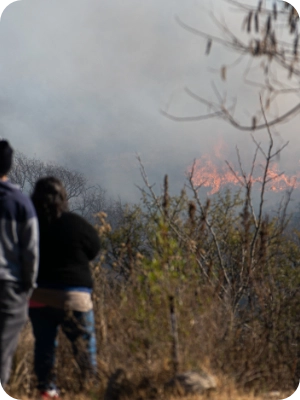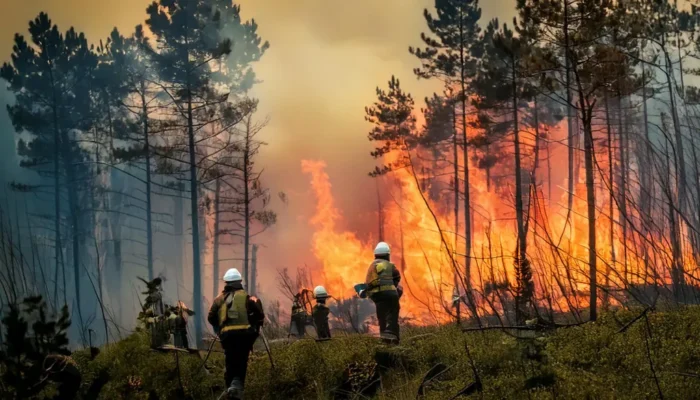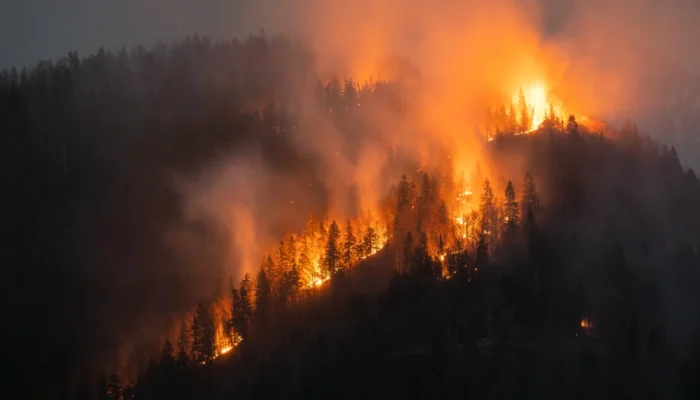In recent years, the term Wildfire Tourism has begun to surface more often, as more people are drawn to the dramatic and often shocking images of wildfires that spread across news channels and social media platforms, and while some travelers may feel a powerful urge to see the damage of a wildfire with their own eyes or even attempt to watch firefighters at work, this type of curiosity raises important ethical questions that must be addressed. When tourists flock to regions that are burning or recently burned, they often place themselves in danger, create risks for emergency responders, and sometimes unintentionally harm the very communities that are struggling to recover. This is why education, prevention, and mitigation must be at the center of the conversation. If we are to understand the role of wildfire tourism in modern society, then we must also understand not just the motivations that drive it, but also the costs that it brings, and how we can shift the focus toward more responsible and educational experiences that protect lives and support recovery instead of undermining it.
.
Table of Contents
ToggleUnderstanding Wildfire Tourism

Wildfire tourism is not a new phenomenon, but the visibility of wildfires in the age of smartphones, live news feeds, and viral videos has made it much more noticeable, and the idea of people traveling specifically to witness a natural disaster may sound strange at first, but when we think about how people have long visited volcanoes, hurricanes, or even sites of floods and earthquakes, it begins to make sense that wildfires would become a subject of the same fascination. People are naturally drawn to extreme events, sometimes out of shock, sometimes out of a desire to feel close to nature’s power, and sometimes because of a belief that being there in person will help them truly understand what happened.
There are several different ways that wildfire tourism takes shape. Some individuals attempt to get close to an active fire, treating it almost like a spectacle, and this type of tourism is the most dangerous because it puts both tourists and first responders at risk. Others choose to visit areas after the fire has passed, exploring the blackened forests and burned-out towns, taking photos, and sometimes even treating these places as though they were museums of disaster. A third and somewhat more positive form of wildfire tourism involves people visiting recovering regions with the explicit goal of supporting local businesses, learning about fire ecology, and even participating in guided tours that explain how communities rebuild and how ecosystems begin to heal. While these different forms may seem similar, the difference between harmful curiosity and responsible education can mean the difference between causing harm and helping a community move forward.
.
Ethical Considerations
The ethical debate around wildfire tourism centers on the simple fact that wildfires are not just natural events, but also human tragedies, and when people arrive as outsiders, their presence can have unintended consequences.
.
Safety Risks
The most obvious concern is safety. When people drive or hike into active wildfire areas, they are putting their lives at risk because fires are unpredictable, winds can change suddenly, and roads may be cut off without warning. Emergency responders, whose job it is to fight the fire and save lives, may have to divert their attention to rescue or protect tourists, which wastes precious time and resources. A visitor who comes only to watch the flames may not realize that their presence could pull firefighters away from the front line and even increase the danger for everyone involved.
.
Impact on Communities
Beyond safety, there is the human side of wildfire tourism that cannot be ignored. When towns are under evacuation orders or when families are displaced from their homes, the last thing they need is an influx of outsiders treating their tragedy as a spectacle. Strangers filling up gas stations, buying supplies, and booking hotel rooms can place extra strain on already limited resources, which were meant for evacuees and emergency workers. For residents, seeing outsiders take photographs of their destroyed homes can feel deeply disrespectful and invasive, because while one person may see an opportunity for dramatic photography, another sees the ruins of their life.
.
Environmental Sensitivity
Finally, there is the issue of the environment itself. Wildfire-affected ecosystems are fragile, especially in the months immediately after a fire when soils are loose, plants are regrowing, and animals are struggling to find new homes. Tourists walking through burned areas can disturb this delicate recovery process, and in some cases, careless behavior like leaving behind trash or even starting campfires can increase the risk of new fires. The irony is that people who come to see the aftermath of a wildfire may end up contributing to further damage if they do not understand the sensitivity of the landscape they are entering.
.
The Role of Education and Prevention

While there are many dangers associated with wildfire tourism, it is also important to acknowledge that interest in wildfires can be channeled into something more positive. Curiosity itself is not the enemy, the problem arises when curiosity is not paired with responsibility. If we can transform this curiosity into a chance for education, then wildfire tourism could actually play a role in promoting fire prevention, fire safety, and even community resilience.
For example, guided tours that take place only after an area is declared safe can give people an up-close look at how wildfires reshape ecosystems. Trained experts such as ecologists, firefighters, or Indigenous leaders can explain how fire affects soil, how trees and plants adapt to burn cycles, and how communities work together to recover. In this way, visitors are not just passive observers but active learners who come away with a better understanding of the challenges posed by climate change, poor land management, and increasing fire risk.
Another powerful form of education comes through storytelling. Journalists, documentary filmmakers, and educators who bring the stories of wildfires to the public can shape how people understand the dangers of careless behavior, the importance of fire prevention programs, and the value of community preparedness. By turning wildfire-affected regions into spaces for learning rather than for disaster sightseeing, we can ensure that curiosity leads to awareness rather than exploitation.
It is also essential to highlight the knowledge of Indigenous communities, many of whom have been practicing controlled burning and other fire management techniques for centuries. Visitors who engage in responsible wildfire education can learn not just about the destruction caused by fire, but also about the ways in which fire, when managed carefully, can be a natural and even beneficial part of the environment.
.
Alternatives to Harmful Wildfire Tourism
For those who feel drawn to learn more about wildfires, there are many alternatives to harmful tourism. Supporting communities in recovery does not require showing up at the front lines of disaster. Instead, people can donate to local organizations, volunteer with approved recovery projects, or participate in virtual tours and educational programs that highlight the science of fire and the experiences of survivors.
Eco-tourism focused on regeneration can also play a positive role. For example, some regions create guided walks months or years after a fire, where visitors can see how plants return, how animals adapt, and how communities build resilience. These experiences not only satisfy curiosity but also give financial support to local economies that may be struggling after the disaster.
Responsible wildfire tourism, if it is to exist at all, must be based on principles of respect, timing, and education. That means avoiding active fire zones, respecting the privacy and dignity of communities, and always leaving the land in better condition than you found it. When tourism becomes a way of supporting resilience rather than interfering with it, then it can be seen as a tool for positive change.
.
Conclusion
The rise of Wildfire Tourism forces us to think carefully about the line between curiosity and exploitation, and while the urge to witness nature’s power is understandable, it must be balanced against the dangers to human life, the emotional toll on communities, and the fragility of ecosystems. When we look at wildfire tourism through the lens, it becomes clear that simply traveling to a disaster zone without purpose or respect is harmful, but when curiosity is channeled through education and support for recovery, it has the potential to be something else entirely.
As climate change continues to make wildfires more common and more destructive, the need for public education will only grow, and the challenge for all of us will be to find ways of satisfying curiosity without putting others at risk. Responsible travel, thoughtful storytelling, and community-based learning can turn what might have been harmful tourism into a tool for fire prevention and resilience building. The next time someone feels the pull of wildfire tourism, the choice should not be between staying away entirely or rushing into danger, but rather between being a passive observer of tragedy or an active participant in education, awareness, and recovery.




